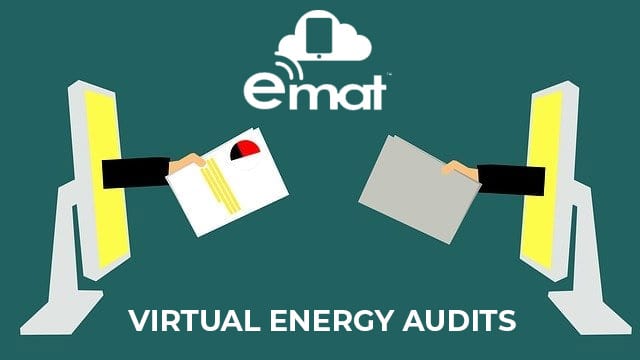How the Transportation Industry Can Meet Decarbonization Targets
The experts have weighed in, and in order to minimize the irreversible damage being caused by climate change, the United Nations has set a decarbonization target of 45% reduction by 2030.
This process will involve major change throughout the economy, but some areas will be more difficult to transform than others. Particularly, industries within the transportation sector are notorious for their contribution to greenhouse gas pollution.
In order to meet decarbonization targets, we need to focus on more than just the automobile industry. We must also research and incentivize decarbonization efforts in commercial aviation, freight, and railroad industries.
Here are 5 essential steps toward meeting decarbonization targets in these challenging industries:
Continue the Process of Converting to Electric
In the past 10 years, electric vehicles have become increasingly easy to make, and therefore more accessible to the average consumer. It is safe to say this trend is going to continue.
But in order to meet decarbonization targets fast, it’s important that we accelerate the process of converting to electric transportation.
According to the International Council for Clean Transportation, “To incentivize the production and adoption of electric vehicles, we need to focus on policies including fiscal incentives, infrastructure investments, consumer information, and more stringent fleet-average reduction requirements.”
The sooner we back this revolutionary technology with funds and political action, the sooner we can reduce our total reliance on fossil fuels.
Political Enforcement
Changing an entire industry is difficult. But changing the individual corporations that compose an industry is a little easier.
The most effective way to induce change in these difficult industries is to enact laws that enforce decarbonization targets. Under these policies, corporations that do not comply can be penalized for harming the environment.
Another way corporations can be held responsible for their impact is through carbon offsetting. This is when an industry compensates for the emissions it produces by donating to projects that reduce an equivalent amount of emissions elsewhere.
Crack Down on Black Carbon Emissions
Black carbon is a particularly harmful form of air pollution that contributes substantially to the greenhouse effect. In order to reduce this pollutant within the transportation sector, cracking down on diesel engines is necessary.
Commercial vehicles, large trucks, and buses are major producers of black carbon. Local and state governments can help fund the conversion to more energy-efficient engines, especially in the areas of public transportation.
This particular industry is important to focus on because carpooling can help reduce individual fuel consumption in cities. But in order for public transportation to become the most effective alternative, it needs to be less reliant on gas-guzzling engines.
Fund the Development of Energy-Efficient Technology
Energy-efficient technology does not come out of nowhere. It is built upon years and years of research, and like everything else in life, this research needs to be funded.
By investing in the development of energy-efficient technology, we can unlock solutions to some of the biggest industry pollutants.
For example, by investing in aerospace research, we can continue to discover alternative propulsion technologies and safe aviation fuels (SAF). When we understand more about how these green processes work, we can more reliably implement them across difficult industries.
Promote and Maintain Energy-Efficient Buildings
The future of technology is exciting, but it is important not to overlook the impact of the infrastructure we currently have.
A significant amount of greenhouse gas pollution is caused by inefficient office buildings, factories, and other industry facilities. This is especially true in older buildings that rely on outdated technology.
It’s important for the transportation industries to also invest in energy efficiency improvements in their existing buildings and machinery.
Even small changes can add up and result in major improvements across the industry – and ultimately get us closer to our global decarbonization targets!
Energy Auditing Software For Industry & Business
The first step to improving energy efficiency in a commercial location is to perform an audit. By identifying the areas of your facility that are inefficient, you can have the confidence to begin investing in improvements.
Energy auditing has never been easier with EMAT Field Auditor!
What the Executive Order on Climate-Related Financial Risk Means for Businesses

On May 20, 2021 President Biden issued Executive Order 14030 (EO 14030) on climate-related financial risk.
The order aims to do several things, including educating the American people on how climate change impacts financial security, strengthening the U.S. financial system, and forming concrete plans for the government to minimize climate-change risks.
How does this order affect businesses? Unfortunately, we don’t know all of the ways it will yet.
From the outlines, we do know the aims of the order for businesses; however, we do not yet have details for how these aims will be put into action.
The main aim of the order for businesses is to increase all disclosure of climate-related financial risk by both the public and private sector. Businesses can expect expanding disclosure and reporting obligations on climate-related financial risks.
There will also be increased scrutiny of organizations regarding those expansions.
So when will businesses know more?
The order calls for several different sectors of the federal government to report on and create plans for climate-related financial risk as it concerns their departments. Set time limits were given to each sector.
As each department releases their statements, we will see an increase in the knowledge of how this order affects individual businesses.
The order called for the following first steps:
- Develop a Whole-of-Government Approach to Mitigating Climate-Related Financial Risk. This section of the order calls for the National Climate Advisor and the Director of the National Economic Council to develop a comprehensive plan to identify and disclose climate-related financial risk to government programs, assets, and liabilities. It also will include the identification of public and private financing needed to help the economy reach net-zero emissions by 2050. The order has allotted 120 days for the creation of this plan.
- Encourage Financial Regulators to Assess Climate-Related Financial Risk. The order asks the Treasury Secretary, who also stands as chair of the Financial Stability Oversight Council, to assess climate-related financial risk to the stability of both the federal government and U.S. financial system. It was recommended Secretary Janet Yellen release a report in 180 days on actions her council recommends to reduce risks to financial stability and plans to incorporate climate-related financial risk assessment into regulatory and supervisory practices.
- Bolster the Resilience of Life Savings and Pensions. The Order directs the Labor Secretary to suspend, revise, or rescind any present regulations that bar investment firms from considering environmental, social, and governance (ESG) factors in investment decisions related to worker’s pensions. It also asks for a report on the Federal Retirement Thrift Investment Board’s ESG considerations.
- Modernize Federal Lending, Underwriting, and Procurement. This section of the order calls for the improvement of federal financial management and reporting of climate-related financial risk. It includes new requirements for major federal suppliers to disclose greenhouse gas emissions and any other climate-related financial risks. Then it directs any federal agency procurements to minimize those risks.
- Reduce the Risk of Climate Change to the Federal Budget. This section asks that the federal government annually develop and publish an assessment of its climate-related fiscal risk exposure. It directs the Office of Management and Budget to reduce exposure through reformulating both the President’s budget and the oversight of budget execution.
For now, the order mainly affects the internal workings of the federal government.
Despite this, there’s potential for the order to affect businesses more as the reports from each department roll in. From the above summary, which you can read more about on the White House’s Fact Sheet, we do know businesses can expect several changes coming.
One thing businesses can expect is mandatory rules on climate disclosure. Any company that plans to borrow from or provide goods and services to the federal government can expect to be required to disclose greenhouse gas emissions and climate-related financial risks.
Additionally, businesses will likely be expected to set science-based goals to reduce greenhouse gas emissions. Preference of federal purchasing will then be given to bids and proposals from suppliers who have lower climate-related financial risk.
The recommendations of the Task Force on Climate-Related Financial Disclosures (TCFD) will likely also standardize this disclosure to encompass all U.S. businesses.
Although we do not yet know the minute details of how the order will directly impact businesses, we can be sure that it will. As reports from the departments are released, more knowledge should become available allowing businesses to better prepare for changes.
Energy Auditing Software for Business
Although there are still so many unknowns on how the Executive Order on Climate-Related Financial Risk will impact your business, it’s important to position yourself to be able to respond to any changes quickly. One of the first steps is conducting an energy audit to see where your energy usage is at now and making changes to decrease your impact. With EMAT Field Auditor, you can conduct this audit more quickly, with fewer mistakes, and at less cost to you than a traditional audit. Schedule a demo today!
Virtual Energy Audits

As more people work remotely and physical presence at work has been limited to essential personnel only, traditional energy audits can be challenging. A traditional energy audit involves a site visit (often via a plane trip), and a walkthrough of the building, both of which may be unsafe and impossible for some time to come.
Not to worry, because there is no need to hit the pause button on the audits you need to get done. EMAT and Virtual Audits to the rescue. With EMAT, Virtual Audits can provide the same level of detail as a standard audit, all while avoiding the site visit. Virtual Audits aren’t new to EMAT; we’ve been doing them for years. EMAT utilizes data available from the building owner and an analysis of utility bills to calculate energy consumption, conduct in-depth analysis, recommend insightful energy conservation measures, and provide a concise final report without sacrificing quality.

Why you should use EMAT for your Virtual Energy Audit:
- EMAT CEMs have been conducting Virtual Audits for years, long before COVID-19 was a thing.
- Our industry leading pricing comes down even further without the cost of travel and site visits.
- EMAT utilizes cutting edge software that improves the efficiency and accuracy of your Virtual Audit.
- You can eliminate the scheduling and safety challenges of on-site visits.
- With EMAT and Virtual Audits, you’ll get faster results and report turnaround.
We provide Virtual Energy Audits all across the country, including:
- Maryland
- Virginia
- North Virginia
- Washington DC
- New Jersey
- New York
EMAT Mentioned in Distributed Energy Magazine
Gains in energy efficiency need to be measured, and that involves an energy audit. The practice of energy auditing has advanced in recent years. For example, auditors now have access to cloud-based systems, such as those offered by EMAT (Efficient Mobile Auditing Technologies), a Frederick, MD-based company with a tablet-to-cloud technology that cuts the time and cost of conducting energy audits by 50% or more.
“This product is meant to give you the capability to do everything that a Level II ASHRAE audit would include,” says EMAT’s CEO, Ken Malnar. “That includes data collection, calculation, and report generation. The information is segmented for different capabilities. If you just wanted to use it for the data collection side to organize data and send it back to your office efficiently, you can use it in that capacity. But if you want to do calculations and generate your own reports, you can do that, and if you want to do it from start to finish, you have that capability also.”
EMAT displaying new EMAT Field Auditor at CxEnergy April 16th and 17th (Booth #400)

We’re happy to announce that we will be attending the CxEnergy 2019 Conference & Expo where we will be showcasing the new EMAT Field Auditor app!
The event runs April 15 – 18 in Orlando, Florida. CxEnergy is the #1 commissioning and energy management event and consistently draws hundreds of the nation’s leading commissioning providers, energy management professionals, MEP engineers, HVAC testing professionals, facility managers, and building owners. The expo hall showcases a wide variety of products including software, instruments, metering devices, controls and services targeted specifically to commissioning, energy management, engineering, and testing firms.
We look forward to seeing you at booth #400 this April.
EMAT LLC announces the release of EMAT Field Auditor

EMAT is excited to announce the immediate release of EMAT Field Auditor, the first of EMAT’s suite of next-generation energy auditing software products. EMAT 1.0 was a significant step forward in energy auditing software when it released in 2016. But over the last two years, our customers talked, and EMAT listened. With cutting edge mobile-to-cloud technology, unparalleled flexibility, ease of use and performance, EMAT Field Auditor is the audit data collection tool for everyone.
Coming in 2019 are two additional next-generation EMAT products, EMAT Light and EMAT Analyzer. When combined together, the new EMAT suite of products will bring the entire process of energy auditing to a new level, and define the new standard for energy auditing software.
See Our Exhibit At WEEC 2018

We are happy to announce our exhibition at the World Energy Engineering Congress (WEEC) this October 17th – 19th. The expo is in Charlotte, NC, at the Charlotte Convention Center. Our energy auditors and engineers will be available to provide hands-on demonstrations of EMAT audit software, and answer your questions.
For full details about WEEC and the expo this year, visit the conference page. We hope to see you in NC!